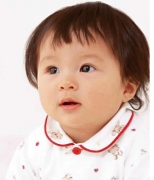Basic knowledge of infantile eczema classification
The clinical symptoms of eczema are varied, but according to the different manifestations of skin lesions during the course of the disease, it can be divided into three types: acute, subacute and chronic. These are described as follows:
1. Acute Eczema
This type of eczema can occur on any part of the body, but is often more easily seen on the head, flexural areas, genitals, dorsum of hands and feet, etc. It usually presents with symmetrical distribution, generally limited to certain areas, while generalized eczema is quite rare.
The skin lesions manifest in a polymorphic way, i.e., red spots, papulovesicles, vesicles, erosions, exudation, crusting, scaling, etc., all kinds of rashes may be present simultaneously. That is to say, in the same lesion area, at the same time, there may be more than 3-4 types of damage present. The inflammatory response in the affected area is usually more obvious, especially in the central part, often accompanied by erosion and exudation. However, the boundaries of the lesions are unclear, and the swelling is relatively mild.
Severe itching is felt, and the degree of itching varies depending on the location of the disease and individual tolerance. The itching is particularly severe at night, and the condition can affect sleep. Additionally, due to scratching, bacterial infections may easily occur, leading to swelling, abscesses, lymphangitis, lymphadenitis, and other suppurative dermatoses.
Acute eczema can be cured if properly treated, but it tends to recur. Clinically, it is also often observed that this type of eczema evolves into subacute or chronic eczema.
2. Subacute Eczema
When the inflammatory response of acute eczema subsides, and the redness and exudation significantly reduce, the entire lesion is mainly characterized by papules, interspersed with slight erosion, minimal exudation, accompanied by a few crusts or scales, then it can be called subacute eczema. During this phase, subjective itching still exists, and the course of the disease can last for several weeks. If the disease persists without healing, it can evolve into chronic eczema; if improperly handled, the condition can rapidly worsen and revert to acute eczema.
3. Chronic Eczema
This type of eczema can present as chronic from the onset, but most cases evolve from acute or subacute forms. It can also be seen when acute eczema repeatedly occurs in the same location, eventually transforming into chronic eczema. Chronic eczema commonly occurs on the limbs, such as hands, feet, lower legs, elbow pits, knee pits, etc., and its distribution is often symmetrical. The skin lesions are usually localized, showing thickened and infiltrated skin, often developing lichenification, pigmentation is frequently observed, and the boundaries are exceptionally clear. Patients often complain of unbearable itching, which worsens with heat or at nightfall. The condition is prolonged, lasting for years with difficulty in curing. During this period, if local treatment is improper or dietary irritants are consumed, chronic eczema can acutely flare up, presenting clinically like acute eczema.
Eczema can also be named based on the different sites of occurrence. Here's a brief description:
Ear Eczema: Commonly occurs in the folds behind the ear, known as "xuan er chuang" in Traditional Chinese Medicine. The skin lesions present as red spots, erosion, slight exudation, crusting, and fissuring. They are mostly symmetrically distributed, with significant itching, and infection is easily compounded. This condition is more common in children.
Nipple Eczema: More common in women, often occurring during lactation. It commonly affects the nipple, areola, and surrounding areas, often bilaterally. The rash presents as red spots, infiltration, erosion, exudation, and crusting, sometimes accompanied by fissuring. Severe itching is felt, along with a slight pain sensation. If breastfeeding is stopped, the symptoms can quickly improve until complete recovery.
Hand Eczema: The most prominent feature of this type is its susceptibility to climatic influence, commonly worsening in winter and improving in summer. It often invades the back of the fingers, with noticeable infiltration and thickening, possibly accompanied by fissuring and desquamation. The itching is excruciating, often exacerbated by detergents or similar stimuli.
Lower Leg Eczema: This type is clinically more common, often occurring on the inner and outer sides of the tibia, with symmetrical distribution. The rash presentation is the same as acute or chronic eczema. Some patients develop varicose veins, mostly in the lower third of the leg. Due to impaired blood return, chronic stasis can occur, with significant local pigmentation, and some may develop ulcers.
Vulvar or Scrotal Eczema: Occurs on the vulva or scrotum, with skin lesions presenting as red spots, erosion, and exudation, also appearing as lichenification, with marked pigmentation. This type of eczema, due to rich nerve distribution, causes unbearable itching.
Anal Eczema: Occurs around the anus, and may involve nearby skin. The skin lesions are often infiltrated and hypertrophic, moist or slightly exudative, and can also cause fissuring. Severe itching occurs.
Article source: Zhanjiang Assistant Medical Network (www.care0759.com) Original article: http://www.care0759.com/a/maiyaozhinan/xiaoershizhen/2010/0412/1691.html
